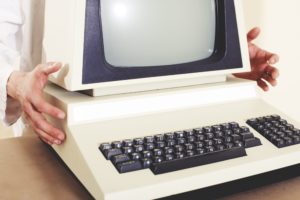Debates. We all experience them in one way or another. Which came first, the chicken or the egg? Was the dress blue or gold? In the IT world we face similar debates. One of IT’s largest debate is hardware refresh vs maintaining existing hardware. Most resistance comes from this simple question, how can you best use your already-paid-for hardware while understanding the efficiency issues that come with staying with older equipment? Not to mention storage and daily processing requirements that drive the need to upgrade the hardware. Refresh too early and you’re throwing money out the window. Refresh too late and you risk your company’s IT systems, and ultimately the business itself, screeching to a hard stop.
IT departments typically follow a hardware refresh cycle of three to five years, but that’s really a best practice. In terms of servers, for example, hardware can be used for much longer. Particularly if the applications supported are running efficiently. Your UniVista team customizes your refresh cycles to suit your business needs through a simple budgeting process. With that said, here are 5 tips to consider when making this tough decision:
- Understanding the specifications of your hardware.
Make sure to perform a yearly audit that clearly documents the processor power, memory, hard drive space. A well-planned audit will help you identify opportunities to keep older equipment in service, simply relying on updates, maintenance or even virtualization that could extend the life of hardware therefore avoiding full replacement all together.
- Understanding your business needs and requirements.
What are you hoping to achieve by upgrading hardware? Improved reliability? Support for more advanced software and applications? There needs to be a solid business reason to do a major hardware refresh – certainly more pressing than simply outrunning your fiscal calendar. Having a clear understanding of the business needs and your current IT infrastructure’s ability to meet them is essential.
- Understand that the costs associated with upgrades can extend well beyond hardware fees.
The associated costs to run those servers – including power, cooling and networking – all hit the bottom line, and hard. New systems may actually be cheaper to cool or require a smaller footprint in house, reducing costs. On the other side of the coin, new hardware may bring with it additional power requirements or require a networking boost to reach their full potential. Take into account the total cost of ownership running new server hardware and not just an upfront price-per-PC cost.
- Know your server options: virtualization vs physical.
Virtualization can stretch server hardware timeframe significantly, allowing your business to run software-based virtual machines rather than spinning up new physical hardware. This creates a more versatile IT environment. More virtual servers running on fewer physical machines can also reduce costs in energy, cooling and even real estate. Keep in mind though, more virtualization means higher processor and memory needs which intern may require more powerful hardware.
- Take into account improved disaster recovery.
Servers should be configured to serve your business’ everyday needs. At the same time, IT must plan for the worst as well. That includes recovering from a natural disaster all the way down to a simple power outage or any other unexpected downtime (internet outage!!) all while maintaining as close to 100% availability and business continuity as possible.
Plan for a hardware refresh cycle.
Hopefully this list of tips helps to make clear that savvy businesses today don’t look solely to a fiscal budgeting calendar to plan their hardware refresh. They need to rely on a clear understanding of their IT environment, the needs of their business, and also the cycles that technology industries follow to drive a change that is both practical and cost effective. Questions? Reach out to your Account Managers as your UniVista team is here to help with the budgeting and planning of your hardware refresh.
Your UniVista Team
*Celebrating 20 Years of Customer Satisfaction*


